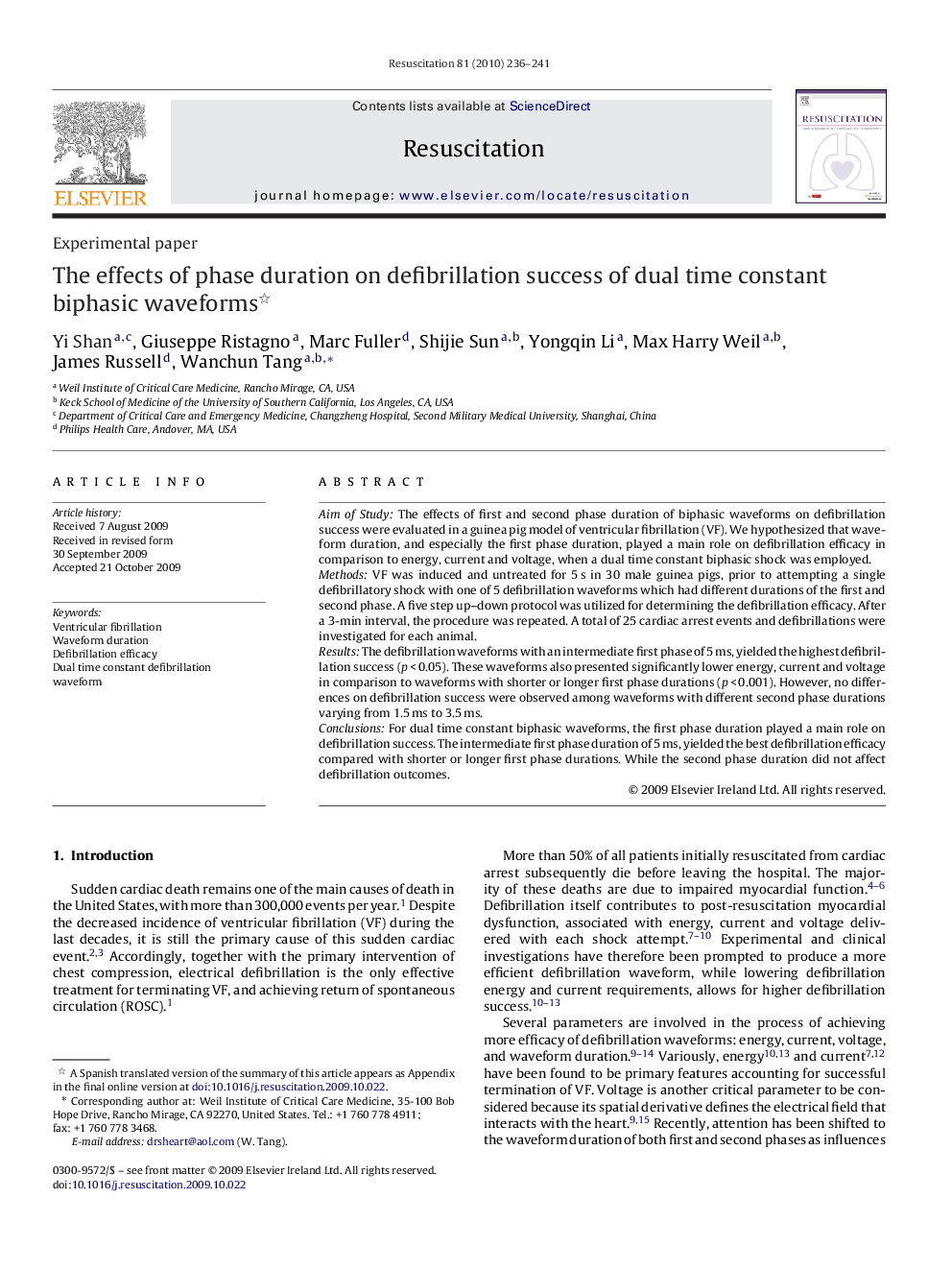| Article ID | Journal | Published Year | Pages | File Type |
|---|---|---|---|---|
| 3009832 | Resuscitation | 2010 | 6 Pages |
Aim of StudyThe effects of first and second phase duration of biphasic waveforms on defibrillation success were evaluated in a guinea pig model of ventricular fibrillation (VF). We hypothesized that waveform duration, and especially the first phase duration, played a main role on defibrillation efficacy in comparison to energy, current and voltage, when a dual time constant biphasic shock was employed.MethodsVF was induced and untreated for 5 s in 30 male guinea pigs, prior to attempting a single defibrillatory shock with one of 5 defibrillation waveforms which had different durations of the first and second phase. A five step up–down protocol was utilized for determining the defibrillation efficacy. After a 3-min interval, the procedure was repeated. A total of 25 cardiac arrest events and defibrillations were investigated for each animal.ResultsThe defibrillation waveforms with an intermediate first phase of 5 ms, yielded the highest defibrillation success (p < 0.05). These waveforms also presented significantly lower energy, current and voltage in comparison to waveforms with shorter or longer first phase durations (p < 0.001). However, no differences on defibrillation success were observed among waveforms with different second phase durations varying from 1.5 ms to 3.5 ms.ConclusionsFor dual time constant biphasic waveforms, the first phase duration played a main role on defibrillation success. The intermediate first phase duration of 5 ms, yielded the best defibrillation efficacy compared with shorter or longer first phase durations. While the second phase duration did not affect defibrillation outcomes.
